
We collect basic website visitor information on this website and store it in cookies. We also utilize Google Analytics to track page view information to assist us in improving our website.
If you’re passionate about metal cutting or just keen to learn more, you’ve landed in the right place.
For over 38 years, Amber Steel has been at the forefront of metal cutting services, specializing in laser cutting, flame cutting, and plasma cutting. Our expertise has carved a niche in this cutting-edge industry, delivering precision and excellence across industrial projects big and small.
In our blog, we’ll share a mix of useful tips, innovative applications, our thoughts on sustainability in steel cutting, and more. Expect stories from the cutting floor, insights into how our processes can streamline projects across industries, and a few lessons we’ve learned along the way.
While we keep some of our trade secrets under wraps, this blog is designed to offer valuable nuggets of wisdom that you simply won't find anywhere else. Whether you’re a professional in the industry or someone fascinated by the possibilities of metal cutting, you'll find something of value here.
So, stick with us as we delve into the finer points of metal work. We’re glad to share our insights and lead discussions that matter to our industry.
How precision metal cutting propels the aerospace industry, from constructing lighter frames to enhancing aerodynamics.
The role of advanced metal cutting in automotive manufacturing, driving innovations in vehicle design and efficiency.
All about the robust and versatile process of flame cutting, ideal for tackling thicker metals with precision and ease.
Discover the art of crafting metal furniture, where cutting techniques meet design to create both functional and aesthetic pieces.
A behind-the-scenes look at the mechanics of metal cutting technologies and the science that makes them tick.
Laser cutting is where extreme precision meets efficiency, allowing for intricate designs and clean finishes.
The critical role of precise steel cutting in developing reliable and intricate medical devices.
How steel cutting supports the oil and gas industry with components that withstand extreme environments and pressures.
Known for its speed and versatility, plasma cutting slices through conductive metals with hot plasma.
Safety first! Tips and insights on maintaining a safe environment while handling powerful metal cutting equipment.
The backbone of construction, where steel fabrication and cutting technologies create frameworks that shape skylines.
Sustainability
A look at sustainability in metal cutting, focusing on practices that reduce waste and conserve energy to protect our planet.
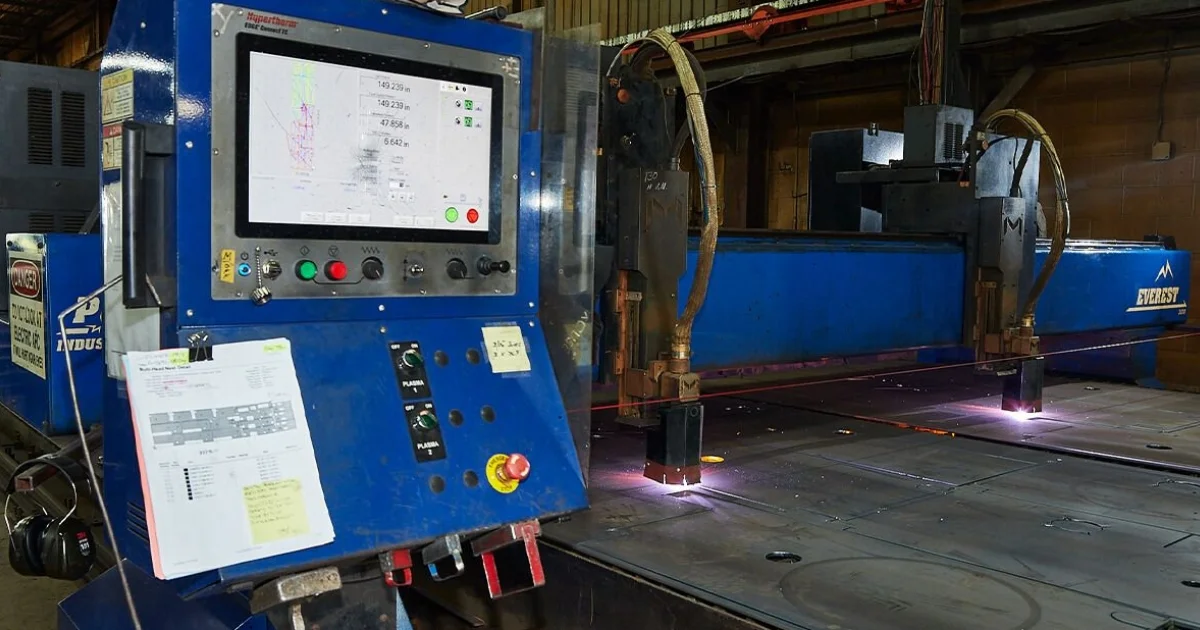
Cutting metal with precision used to mean hours of careful work. Not anymore. Modern metal shops use plasma cutting – a beam of superheated gas that cuts through steel with perfect accuracy every time.
Listen in any fabrication shop and you'll hear plasma cutters steadily working. These machines turn day-long cutting jobs into minutes of precise work. From shipyards to car factories, plasma cutting tackles jobs that would challenge any other method.
The technology has transformed manufacturing since its start in the 1950s. What began as a way to cut tough metals has evolved into a computer-controlled process that delivers unmatched precision. Today's plasma cutting systems handle everything from thin sheets to thick plates, clean or rusty metal, simple cuts to complex designs.
At Amber Steel, computer controls guide our plasma cutters with pinpoint accuracy. We handle steel plates up to 1.250" thick, with precision to +/- 0.040". Every cut meets exact specifications, perfect for both single parts and production runs. Our systems serve industries from construction to aerospace, delivering the quality modern projects demand.
Questions about plasma cutting? This guide shares what you need to know. For quick answers, visit our Plasma Cutting Service page.
Let's explore what plasma cutting can do.
Think of plasma cutting as a precision torch that runs hot enough to melt metal instantly. Using a superheated electrical arc, it cuts through steel, stainless steel, aluminum, and other metals with remarkable speed and accuracy.
If it conducts electricity, chances are plasma can cut it. Common materials include:
Mild steel
Stainless steel
Aluminum
Brass and copper
Our plasma systems handle everything from thin sheets to plates up to 1.250" thick. While some industrial systems can cut even thicker materials, this range covers most manufacturing and construction needs.
Plasma cutting shines where other methods fall short:
Slices through metal faster than traditional methods
Handles rusty or painted surfaces without problems
Costs less than laser cutting for thick materials
Creates clean cuts with minimal waste
Each has its sweet spot. Plasma cutting works better for thick materials, offering faster cuts at lower costs. Laser cutting excels with thin materials and intricate designs. Check out our detailed comparison in "Plasma Cutting vs. Laser Cutting."
Working with plasma cutting requires proper safety measures:
Protective gear (gloves, goggles, fire-resistant clothing)
Good ventilation to handle fumes
Fire safety equipment nearby
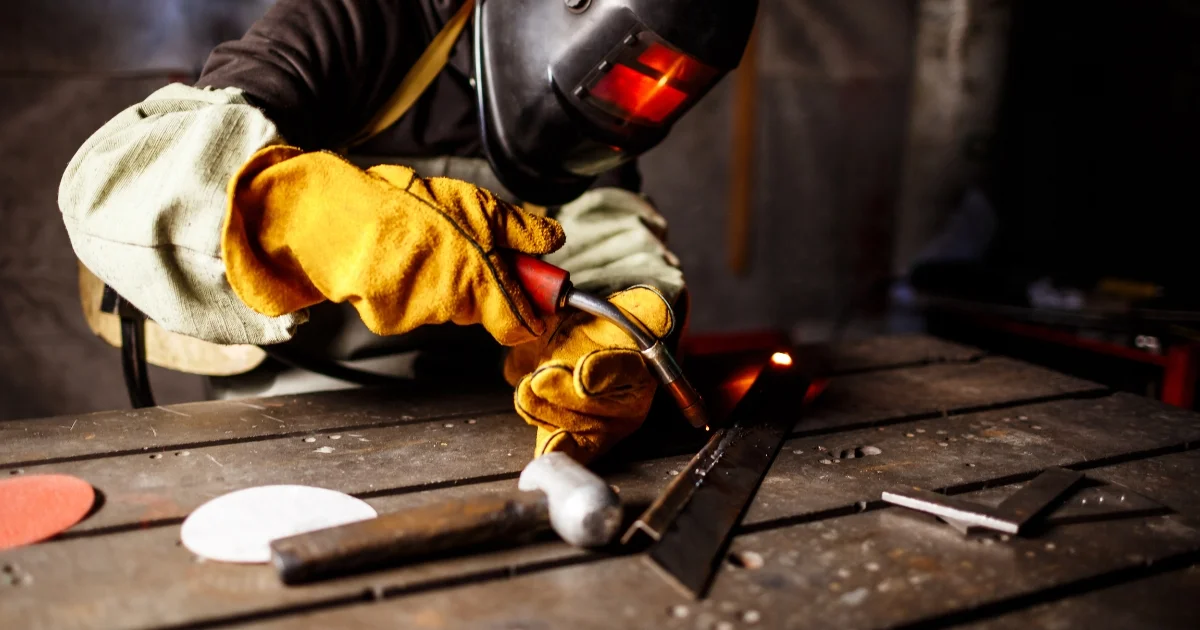
Our computer-controlled systems add extra safety while ensuring consistent cuts.
Want more details? Visit our complete Plasma Cutting FAQ page.
Plasma cutting looks nothing like it did in the 1950s. Those early machines were bulky and basic - think of switching from a flip phone to today's smartphones. That's how dramatic the changes have been.
Modern plasma cutters use computer controls and improved power systems to deliver:
Cutting speeds that old systems couldn't touch
Power that handles thicker materials with ease
Precision cuts with minimal heat damage to surrounding metal
At Amber Steel, we use the latest plasma cutting systems to stay ahead of industry demands. Want to learn more? Check out our blog post "Exploring the Evolution of Plasma Cutting Technology."
Manufacturing teams often ask us about scaling up their cutting operations. What makes plasma cutting stand out is its sweet spot between speed and precision. Think assembly lines churning out identical parts, hour after hour.
Here's why manufacturers choose plasma cutting for large-scale production:
Production cycles that keep pace with demanding schedules
Less waste means lower costs per part
Flexibility to switch between custom work and mass production
At Amber Steel, our computer-controlled systems ensure every cut matches the first one, whether you need ten parts or ten thousand. Each piece meets exact specifications, keeping your production line moving.
Want to learn more about scaling up? Read our blog post "Power Up Your Production with Plasma Cutting at Scale."
Edge quality can make or break a project. While plasma cutting is fast, getting those perfect edges takes more than just hitting the start button.
Three key factors determine edge quality:
Machine setup – Getting the right gas pressure and power settings
Cutting speed – Moving too fast or slow creates rough edges
Equipment care – Fresh nozzles and parts cut cleaner than worn ones
At Amber Steel, our computer-controlled systems maintain ideal cutting conditions throughout every job. We monitor and adjust these factors constantly to deliver edges that meet or exceed industry standards.
Need more details about achieving clean cuts? Check out our guide "Plasma Cutting Tips for Achieving Clean Edges in Steel."
Flame cutting (also called oxy-fuel cutting) and plasma cutting both have their place in metal fabrication. Think of plasma cutting as a precision tool, while flame cutting is more like a heavy-duty workhorse. Both get the job done, but in different ways.
Here's how they stack up:
Plasma: Zips through metal like a hot knife through butter
Flame: Takes its time, especially on thick materials
Plasma: Computer control delivers exact cuts time after time
Flame: Works well but leaves rougher edges
Plasma: Handles nearly any metal that conducts electricity
Flame: Sticks mainly to carbon steel
Plasma: Links with computer systems for automated cutting
Flame: Needs more hands-on control and skill
Want a deeper dive into these differences? Read this comparison guide.
When it comes to metal cutting, plasma offers several green advantages. It wastes less material and uses energy more efficiently than older methods, but there are still environmental factors to consider.
Here's what matters for the environment:
Metal fumes need proper ventilation and filtering
Modern systems capture more particles than ever
Uses less energy than flame cutting
Needs both electricity and compressed gas to run
Precise cuts mean less scrap metal
Most cut material can be recycled
At Amber Steel, we take environmental responsibility seriously. Our ventilation systems exceed standards, and we optimize every cut to minimize waste. We also recycle all eligible scrap metal. Read our article if you want to learn more about the impact of plasma cutting.
Smart management of plasma cutting supplies makes the difference between profit and waste. Just like changing your car's oil on schedule keeps it running smoothly, maintaining plasma cutting components keeps cuts clean and costs down.
Key supplies to watch:
Nozzles and Electrodes: Replace before quality drops
Gas Supply: Choose the right gas for each job
Cutting Table: Keep it clean and well-maintained
At Amber Steel, we track component life and performance carefully. This attention to detail means better cuts and lower costs for our customers. Each part gets replaced at the right time - not too early, not too late.
Want to cut costs without sacrificing quality? Read our guide "Plasma Cutting Consumables: Efficiency and Cost Savings."
Safety comes first when you're working with equipment hot enough to melt steel. Proper protection and training prevent accidents and keep everyone healthy.
Every plasma cutting job requires:
Proper Gear: Safety glasses, heavy-duty gloves, and flame-resistant clothing
Clean Air: Strong ventilation systems that pull away metal fumes
Smart Systems: Computer-controlled cutting that keeps operators at a safe distance
At Amber Steel, safety isn't just a checklist – it's how we work every day. Our teams use the latest safety equipment and follow strict protocols that exceed industry standards. Check out this guide if you need more details about plasma cutting safety.
Metal fabrication depends on getting clean, accurate cuts through steel - and plasma cutting delivers. We designed this guide to cover everything from the basics to advanced techniques that help metal fabricators work faster and smarter.
When you watch a plasma cutter at work, you're seeing decades of technology in action. What started as bulky, basic machines in the 1950s has evolved into computer-controlled systems that cut with incredible precision. Today's plasma cutters handle everything from basic straight cuts to complex shapes, turning hours of work into minutes.
At Amber Steel, we put this technology to work every day. Our systems cut steel plates up to 1.250" thick with tolerances down to +/- 0.040". Behind these numbers stands our commitment to quality - making sure every cut meets exact specifications, whether for mass production or custom work.
We've covered a lot of ground in this guide – safety protocols, edge quality, cost management, and environmental considerations. Each topic helps you understand how plasma cutting fits into modern metal fabrication and why it often provides the best balance of speed, precision, and cost-effectiveness.
Need More Information?
Visit our Plasma Cutting page for quick answers
Check our blog for detailed guides on specific topics
Ready to put plasma cutting to work? Get in touch with Amber Steel today.
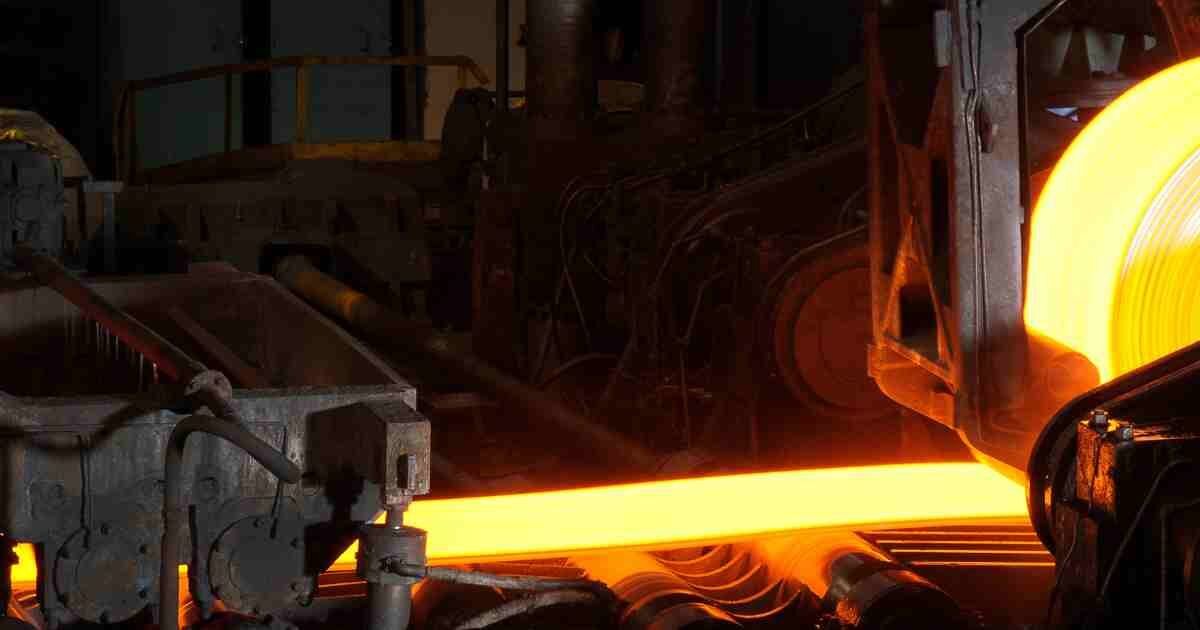
In metal fabrication, heat isn't just a byproduct—it's a powerful tool that transforms how metals perform. Heat treatment gives manufacturers precise control over metal properties through careful heating and cooling. This becomes crucial when cutting metals for everything from aerospace components to construction materials.
The key to successful heat treatment lies in understanding three core methods, each serving a distinct purpose. Annealing softens the material and reduces internal stress, making it more malleable and easier to cut. Hardening boosts strength and resistance to wear, though it can make metals more challenging to work with. Tempering helps find the right balance by reducing brittleness while maintaining strength.
This guide explores how these heat treatments influence metal cutting operations, helping shops achieve better results while managing costs. By mastering these techniques, fabricators can optimize key properties like hardness, flexibility, and strength. Getting these properties right before cutting can significantly improve both the cutting process and final product quality.
For more insights about heat treatment, check out Thermal Processing’s Guide to Industrial Heat Treating.
Annealing involves heating metal to specific temperatures, typically between 1,200°F–1,500°F (649°C–815°C) for steel and 570°F–770°F (300°C–410°C) for aluminum alloys. The metal is then cooled slowly, like letting a cup of hot tea cool naturally. This gentle process reduces internal stresses and softens the material, making it easier to work with.
When metals are annealed, they offer less resistance to cutting tools. This reduces wear and tear on equipment, allowing for faster cutting speeds and extending tool life. Many fabrication shops anneal aluminum and mild steel when intricate cuts or detailed designs are required. For instance, laser-cutting annealed aluminum sheets produces clean, precise edges while extending tool life by up to 30%, compared to cutting untreated materials.
Hardening heats metal to around 1,500°F (815°C) before rapidly cooling it in water or oil, a process called quenching. This rapid cooling transforms the metal into a harder and stronger state, though it also introduces brittleness. Think of it as plunging a hot pan into cold water—effective but potentially stress-inducing for the material.
The harder metal makes cutting more challenging, as it generates increased friction and heat, which can lead to warping. For example, plasma cutting hardened steel plates often requires reducing cutting speeds by approximately 25% to manage heat buildup and minimize tool wear. Quenching mediums like oil offer a gentler cooling process, reducing the risk of cracks compared to water.
After hardening, tempering reheats the metal to a lower temperature, typically between 300°F–1,200°F (149°C–649°C), and then allows it to cool again. This process softens the material slightly, alleviating brittleness while retaining much of its hardness. Think of tempering as softening butter to just the right consistency—it’s all about finding balance.
Tempered metals offer the best of both worlds: strength and machinability. For structural components like construction beams, tempering at around 800°F (427°C) produces a material that is strong, durable, and capable of being accurately cut and fitted.
Heat-treated alloys, such as tool steels and certain stainless steels, are like complex recipes, with different elements responding uniquely to cutting tools. Success in cutting these alloys depends on selecting the right tools. For example, diamond-coated tools last significantly longer—often 5–20 times—than standard carbide tools when cutting hardened steels. Though these tools require a higher initial investment, they ensure cleaner cuts and greater efficiency over time.
Heat treatment plays a big role in deciding which cutting method will work best. Different cutting processes work better or worse depending on how the metal has been heat treated. Here's how each method matches up with different types of heat-treated metals:
Laser cutting works best with annealed and tempered metals, especially when you need detailed cuts. It creates clean, precise edges and works well with softer materials. However, laser cutting runs into trouble with hardened metals because they resist the beam more strongly.
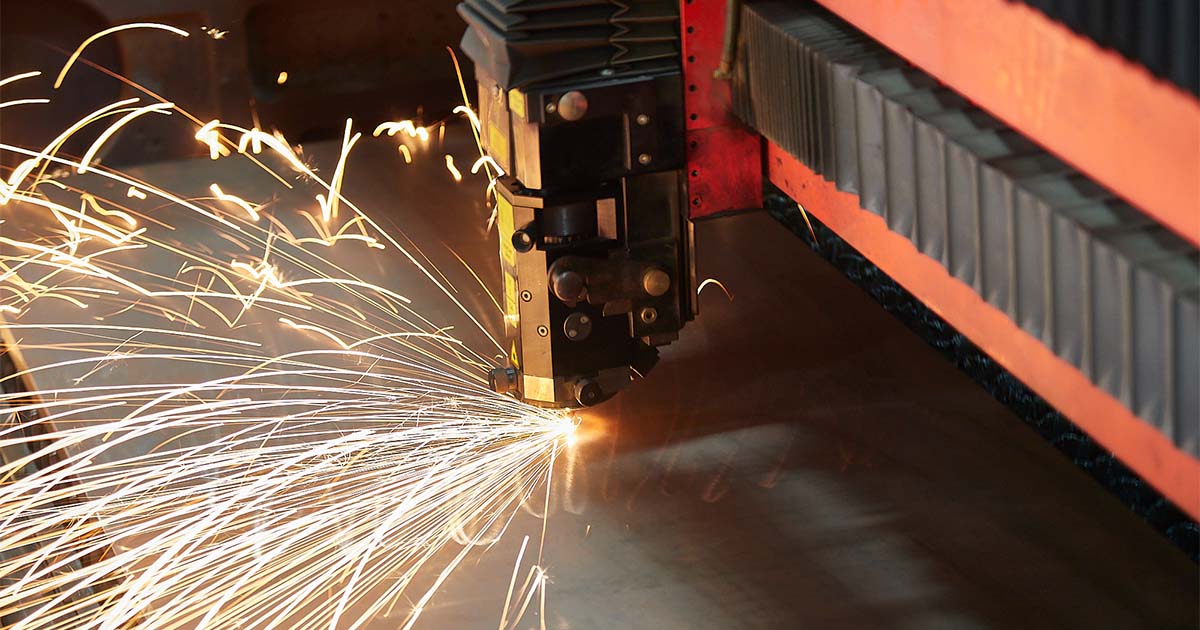
Plasma cutting handles tempered and moderately hardened metals well. It can cut through thick materials effectively while keeping decent precision. While the edges aren't as smooth as laser cuts, plasma cutting offers good speed and versatility. Many shops choose plasma for structural steel work where edge quality isn't as critical.
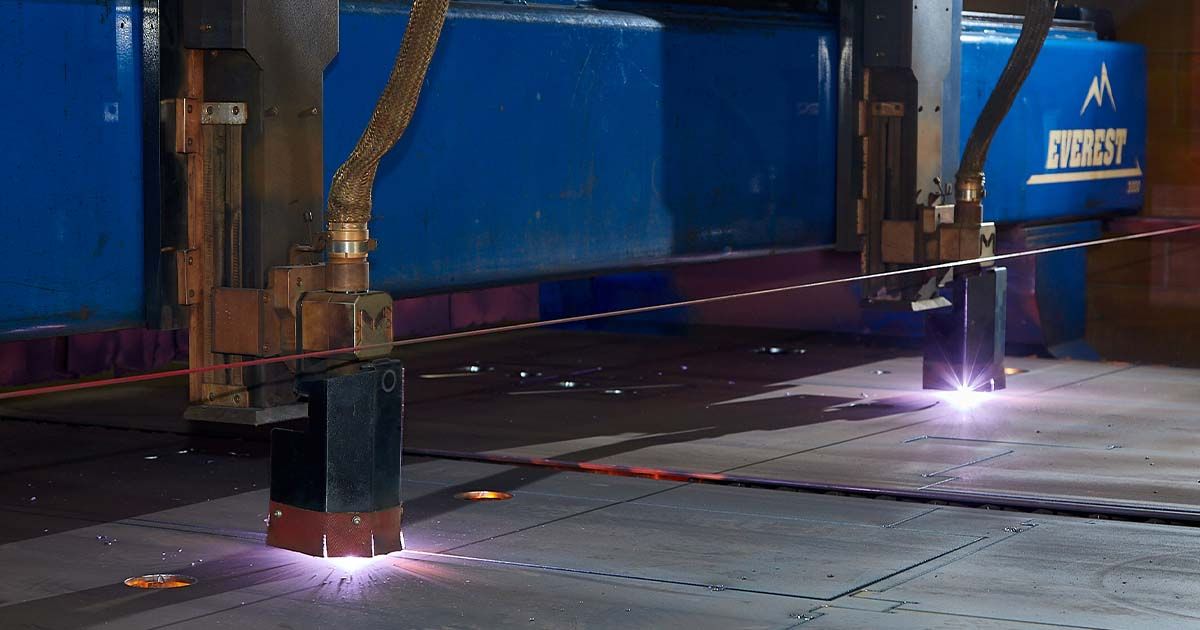
Flame cutting works particularly well with annealed metals and thick steel plates. It's a cost-effective choice for heavy-duty work, but it has limits. The intense heat can distort hardened metals, creating what fabricators call heat-affected zones (HAZ). These zones might change the metal's properties in ways you don't want.
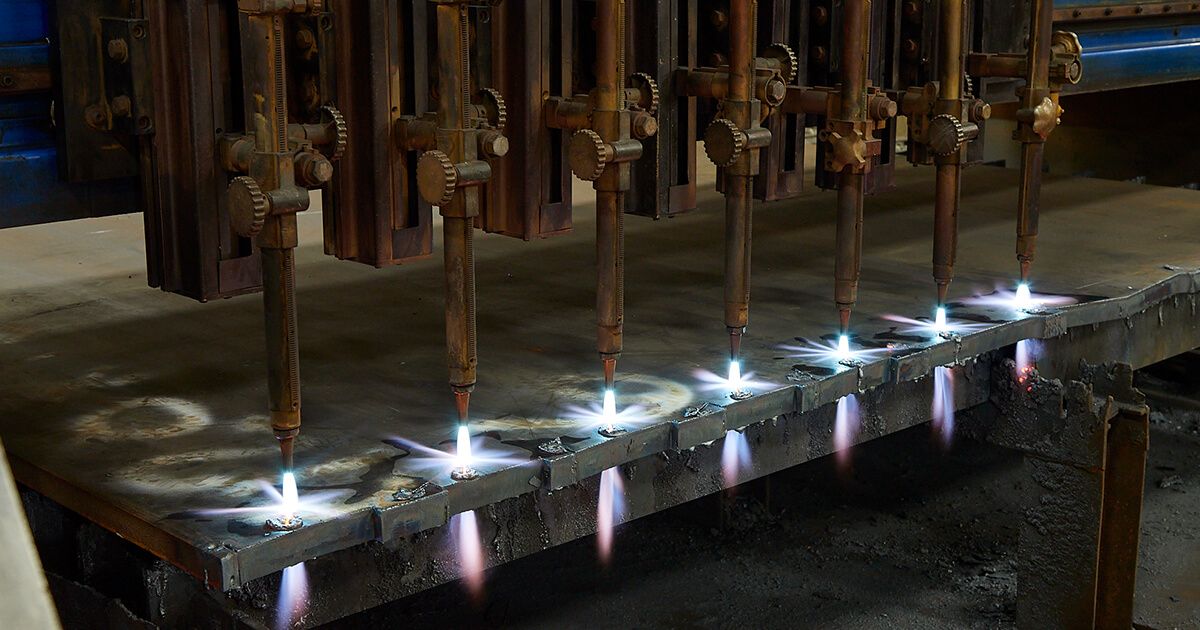
For more details about choosing the right cutting process, check out our article on Plasma Cutting vs. Flame Cutting.
The success of your heat-treated metal cutting depends on understanding and managing several key factors. Here's what needs attention in your cutting operations:
Different metals need different approaches based on their heat treatment. Softer, annealed metals welcome faster cutting speeds while being gentler on your tools. With hardened metals, you'll need to switch to specialized tools and dial back your cutting speed for the best results.
Cutting through hardened metals puts heavy stress on your tools. Using coated tools or carbide materials helps counter this wear. Many shops find this initial investment pays off through longer tool life and more consistent cutting quality. The Fabricator's guide maximizing punch life offers valuable strategies for extending tool life even further, especially when working with hardened materials.
Flame and plasma cutting create heat-affected zones (HAZ) that can change your metal's properties. Good calibration and post-cutting treatments help minimize unwanted changes. Managing these zones takes careful attention to both equipment settings and cooling methods. Check out this article from The Fabricator for more insights into managing heat-affected zones during cutting.
Proper cooling systems, whether air or liquid-based, prevent heat buildup during cutting. This becomes crucial with hardened metals, where excess heat can cause thermal expansion and throw off precision measurements.
Heat treatment and cutting methods serve different needs across industries:
Aerospace needs demand laser cutting of hardened and tempered components for precision in critical parts like turbine blades.
Construction relies on plasma cutting tempered steel beams for structural strength and proper fit.
Automotive manufacturers prefer laser-cutting annealed aluminum sheets for body panels, balancing weight and appearance.
Heavy equipment fabrication often uses flame cutting on thick, annealed steel plates.
Medical equipment presents unique demands. Manufacturers use laser cutting on heat-treated stainless steel for surgical instruments. This application requires perfect balance between hardness and corrosion resistance, with zero tolerance for cutting-induced flaws that could affect safety.
Advancements in laser and plasma cutting technologies are enabling faster and more precise operations. Innovations like AI-guided cutting and advanced simulation software are being adopted to streamline workflows and reduce errors. As industries demand higher efficiency, staying updated on these trends is critical.
For more on industry developments, explore Metal Cutting Trends in 2025.
Making metal too hard through heat treatment can create cutting problems. Many shops first harden the metal for strength, then use tempering to make it more workable. This two-step approach helps maintain strength while making cutting easier. Getting the hardness level right involves careful monitoring of temperatures and cooling rates. Most fabricators test the metal's hardness at several points to ensure consistent results.
Heat treating your metal before cutting often saves time and money. Annealing the metal first lets you cut faster and keeps your tools sharp longer. This preparation step leads to cleaner cuts and fewer problems during machining. Well-planned pre-cutting treatment can reduce overall production time by up to 30% in many cases. The key is matching your annealing process to both your material type and your planned cutting method.
Some parts, especially precision components, benefit from heat treatment after cutting. Tempering helps relieve the stress that builds up during cutting. This extra step can make parts last longer and perform better in their final use. Post-cutting heat treatment becomes particularly important for parts that will face heavy loads or frequent stress cycles. Many aerospace and automotive components require this additional processing to meet strict performance standards.
Some projects work best when you combine different cutting approaches. A common strategy uses laser cutting for detailed work and plasma cutting for removing larger sections. This gives you both the precision and speed you need.
For example, many fabricators use lasers for exact edge cuts, then switch to plasma cutting for the heavier work. Planning these combination approaches requires careful consideration of how different cutting methods affect the metal's properties. Smart sequencing of operations can significantly reduce both production time and material waste.
Every successful project starts with informed choices. Understanding how heat treatment affects metal properties and choosing the right cutting method ensures efficiency and precision. Whether you need the soft workability of annealed metals, the strength of hardened steel, or the balanced properties of tempered components, aligning heat treatment with cutting processes is the key to success.
At Amber Steel, we find solutions that meet your project’s needs. From material selection to cutting method optimization, our expertise ensures your fabrication process runs smoothly from start to finish. For more expert advice, read our guide on Maximizing Efficiency in Industrial Laser Cutting Operations.
Ready to tackle your next project? Contact Amber Steel for expert advice and cutting solutions.